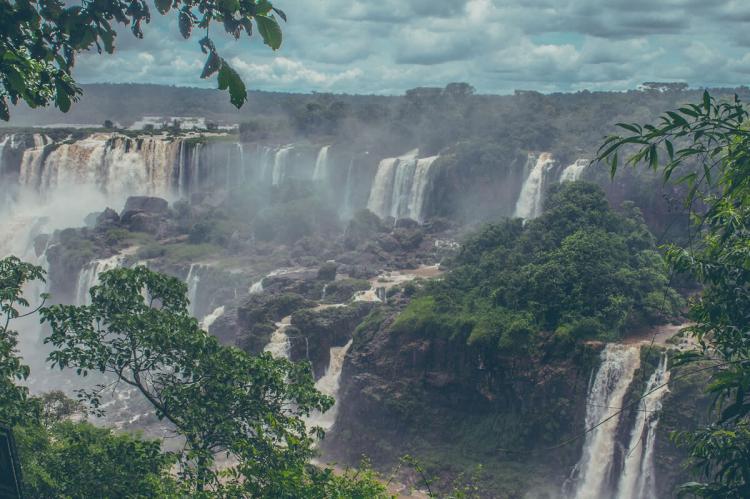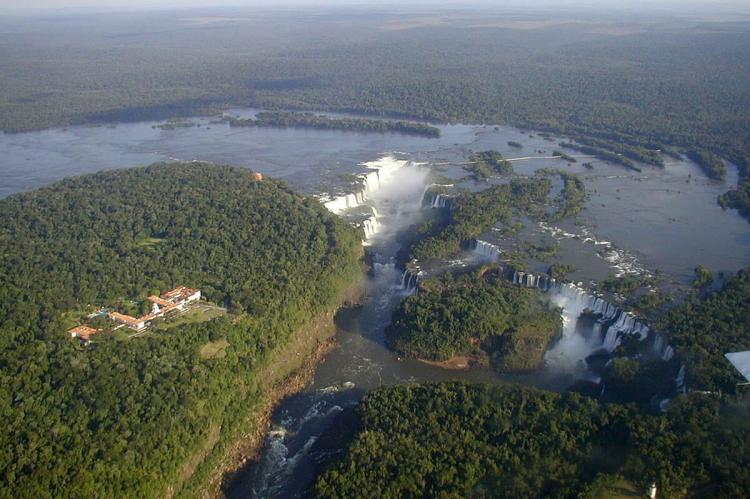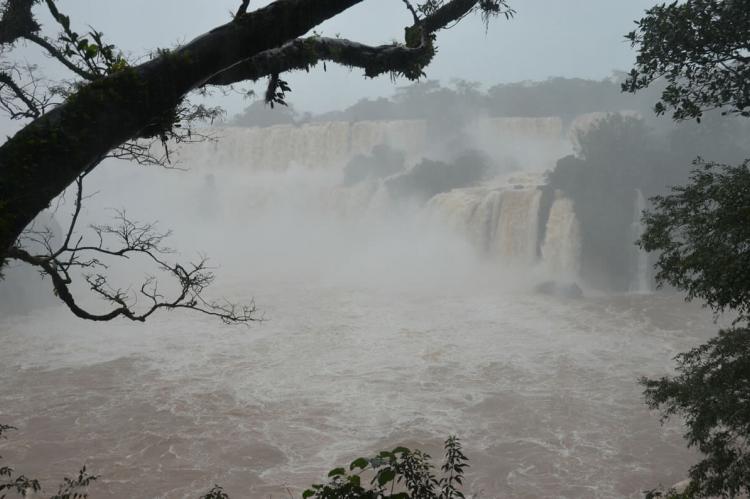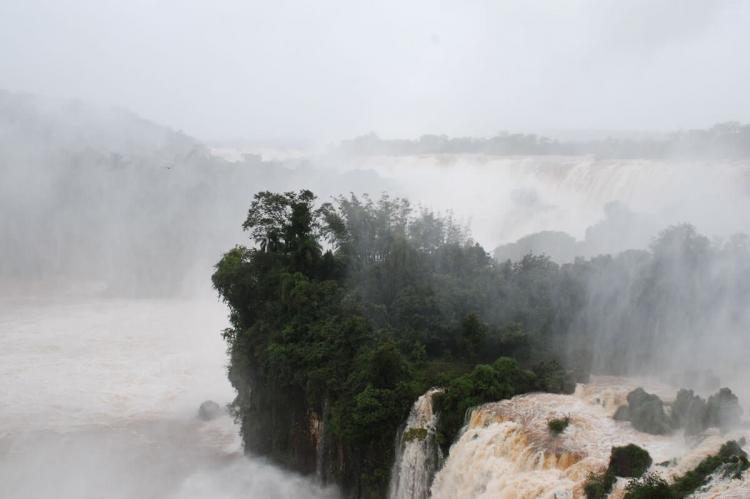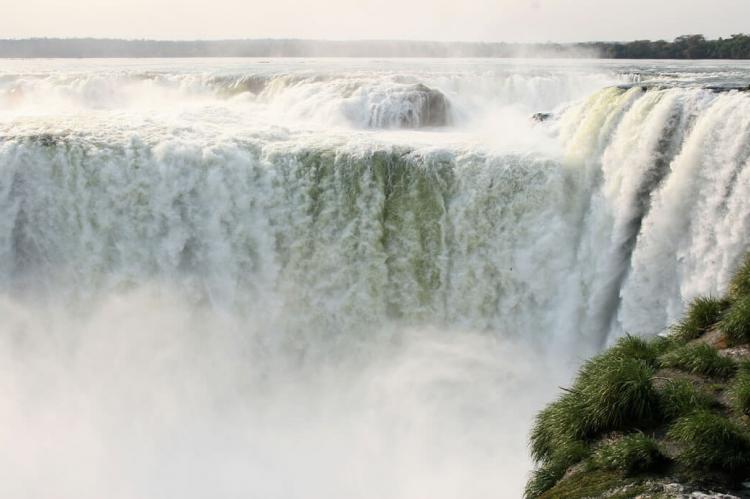Iguazú Falls: Iguazú National Park (Argentina)
Iguazú National Park, located in the northeastern tip of Argentina, is on a basaltic line spanning the border with Brazil. Iguazú Falls, the semicircular waterfall at the heart of this site, comprises many cascades producing vast sprays of water and is one of the most spectacular waterfalls in the world.
Iguazú Falls
The Iguazú Falls are waterfalls of the Iguazu River on the border of the Argentine province of Misiones and the Brazilian state of Paraná. Shared with Brazil, they are known as the Iguaçu Falls on the Brazilian side of the border. Across a width of 2,682 m (8,799 ft), the Iguazú River ("Iguaçu" in Brazil) drops vertically for approximately 80 m (260 ft) in a series of cataracts.
The river, aptly named after the indigenous term for "great water," forms a large bend in the shape of a horseshoe in the heart of the two parks and constitutes the international border between Argentina and Brazil before it flows into the mighty Paraná River.
The Iguazu Falls are located where the Iguazu River tumbles over the edge of the Paraná Plateau or Brazilian Highlands, 23 km (14 mi) upriver from the Iguazu's confluence with the Paraná River. The staircase character of the falls consists of a two-step waterfall formed by three layers of basalt. The steps are 35 and 40 m (115 and 131 ft) in height.
Numerous islands along the 2.7 km (1.7 mi) edge divide the falls into many waterfalls and cataracts, varying between 60 and 82 m (197 and 269 ft) high. The number of these smaller waterfalls fluctuates from 150 to 300, depending on the water level.
About half of the river's flow falls into a long, narrow chasm called the Devil's Throat. To the left of this canyon, another part of the river forms 160 - 200 individual falls, which merge into a single front during the flood stage. San Martín, Adam and Eva, Penoni, and Bergano are the most significant falls.
Giant clouds of spray permanently soak the many river islands and the surrounding riverine forests, creating an extremely humid micro-climate favoring lush and dense subtropical vegetation harboring diverse fauna.
Iguazú National Park
Iguazú National Park covers approximately 67,000 ha (165,500 acres) in the Misiones Province, located in the northeastern tip of Argentina and bordering the Brazilian state of Paraná to the north.
Iguazú National Park, jointly with its sister Iguaçu National Park in Brazil, is among the world's visually and acoustically most stunning natural sites because of its massive waterfalls. UNESCO inscribed it as a World Heritage Site in 1984.
In addition to its striking natural beauty and the magnificent liaison between land and water, Iguazu National Park and its neighboring property constitute a significant remnant of the Atlantic Forest, one of the most threatened global conservation priorities.
Historically, this forest biome covers parts of the Brazilian coast and extends into northern Argentina, Uruguay, and eastern Paraguay. It is known for its extreme habitat, species diversity, and a high degree of endemism.
Iguazú National Park has a long conservation history dating back to the early 20th Century and was declared a National Park in 1934, illustrating the longstanding recognition of its quality.
Flora and Fauna
Around 2000 plant species, including some 80 tree species, have been suggested to occur on the property, along with about 400 bird species, including the elusive Harpy Eagle. The parks also have wild cats and rare species, such as the broad-snouted Caiman.
Protection Status
Jointly with the contiguous Iguaçu National Park in Brazil, inscribed on the World Heritage List in 1986, it constitutes one of the most significant remnants of the Atlantic Forest.
Today, the parks are mostly surrounded by a landscape strongly altered due to heavy logging, both historically and into the present, the intensification and expansion of industrial and small-scale agriculture, plantation forestry for pulp and paper, and rural settlements.
